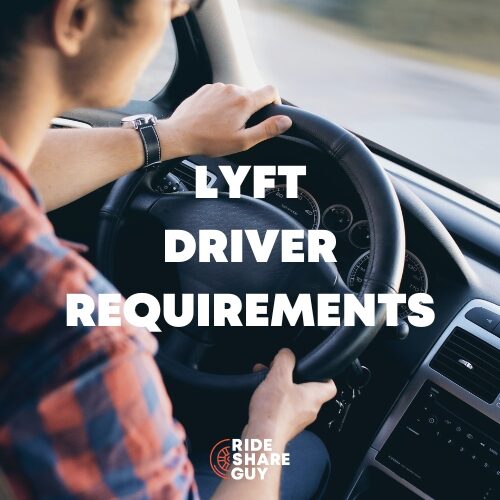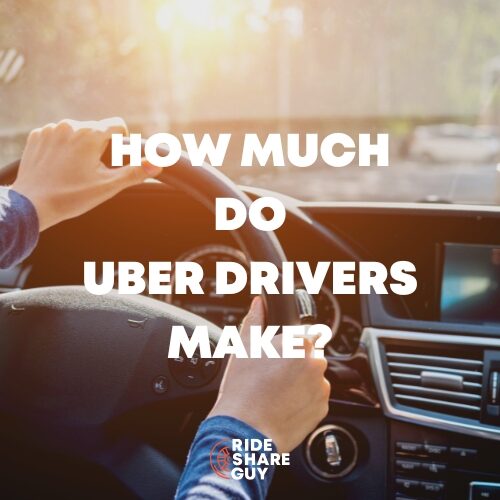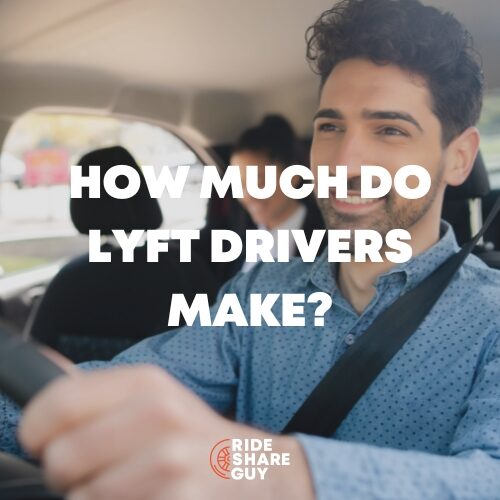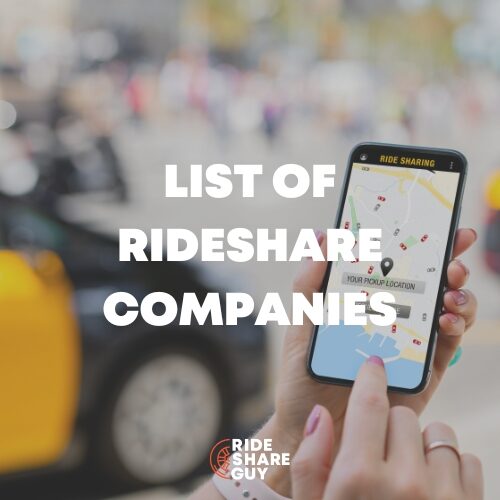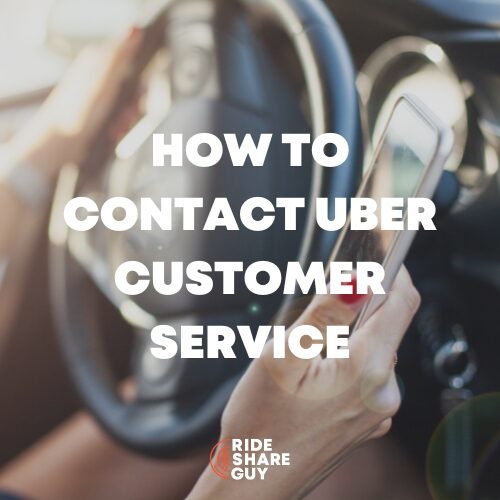If you don’t enjoy driving long distances, a long trip often means hopping on a bus, train, or plane. However, long-distance Uber rides are becoming more popular, giving riders another option and allowing Uber drivers an enhanced earnings opportunity.
How Far Can You Travel with Uber?
If you plan a long-distance trip, you may wonder how far Uber can take you. The good news is they don’t have a distance limit, but there is a time limit of eight hours.
This works only on Uber Hourly, which offers Uber by the hour with a 2-hour minimum required.
However, if you reach your 8-hour limit, you have options. You can request that the driver continue, which they can do at their own discretion. If not, you can request another Uber driver and continue your drive.
What Qualifies as a Long-Distance Uber Ride?
Uber doesn’t state what qualifies as a long-distance ride because they go by hours, not distance. This means you can cross city and state borders. However, you must meet all city and state Uber requirements if there are any differences.
Is There a Distance Limit for an Uber Trip?
Uber doesn’t limit miles, only time. Because it’s a timed trip, riders can request multiple stops. It’s best to talk to the rider before accepting the trip to ensure you understand what they expect from the ride and its duration.
How to Request a Long-Distance Uber
You request a long-distance Uber ride like any other ride. You enter your pick-up and drop-off locations, which will then determine it’s a long-distance ride. If you have multiple stops, include that information so the driver is fully informed and can adequately accept or deny the ride.
Benefits of Long-Distance Uber Rides for Drivers
Drivers benefit from longer drives in several ways including:
Higher Earnings Potential
The longer you drive, the more base fare you earn. In addition, most riders tip based on the cost of the trip. You may earn more money by providing great customer service and making their trip enjoyable.
Flexible Schedule
Uber drivers can create their own schedules. You aren’t obligated to accept trips you cannot accommodate but can take trips when you have the time and are up for a longer trip to earn more money.
Less Waiting Time
Rather than taking short trips and hoping to pick up another ride to increase your earnings, you make a higher amount in one trip. You don’t have to pick up other rides every 30 minutes. Instead, you have one rider for the entire trip.
Challenges and Considerations for Drivers
There are always downsides to consider, even with the benefits of long-distance Uber rides.
Driver Fatigue
The longer you drive, the harder it is on your mind and body. Keeping you and your rider safe could be more difficult if you get tired. It’s important to know beforehand how long a rider plans to make the trip to ensure you can safely drive the distance.
Vehicle Wear and Tear
The more you drive, the harder it is on your car. While driving long distances may not be as hard on your car as stop-and-go trips, you’re increasing your miles, which can wear down your tires and require other maintenance tasks, such as oil changes or flushing essential fluids.
Gas Costs
Your gas costs could be quite high depending on how far you drive. If the ride takes you to a city or state where gas prices are higher than you pay, it eats into your profits.
Long-Distance Uber Rides for Passengers
Passengers often request long-distance Uber rides rather than taking the train or a bus. It’s often more relaxing and may cost less, depending on the length and location of the trip.
Passenger Experience
Taking an Uber anytime can be a little awkward, but it can be even more challenging on long-distance trips. Discuss your trip details with the driver to ensure you’re on the same page.
Also, consider asking the driver about their preferences, such as if they allow eating in the car, the type of music (or no music) they’ll play, and how often they’ll stop if you need to stop to stretch your legs or use the bathroom.
Pricing and Fare Transparency
Uber is transparent with their pricing, so you’ll know how much it will cost before you take the trip. However, there are certain instances where the price may change if you have overages, including:
- Time overage: If your trip exceeds the planned time, the price may increase, but the driver must agree to the extended time, or you may need to find another Uber driver.
- Distance overage: If your trip is longer than the intended mileage, Uber may increase the fare to cover the cost of the additional miles.
- Waiting time: If you make the driver wait more than five minutes, you may pay a Wait Time fee, and the driver can initiate a cancellation if he waits over 15 minutes.
Safety and Trust
Taking an Uber long distance requires extensive trust in the driver’s ability to keep you safe. Read driver reviews carefully, especially those regarding long-distance Uber rides, to ensure you feel comfortable with the driver.
Strategies for Handling Long-Distance Uber Rides Effectively
Accepting long-distance Uber rides can be a great way to increase your earnings. Here are some ways to handle the rides.
- Map out your gas costs: Use Uber with gas apps to determine how much you’ll pay in gas for the trip. This ensures you stop at the most affordable gas stations and only take trips that make financial sense.
- Ensure you have proper insurance coverage: Long-distance Uber rides pose more risks and may be outside your normal insurance coverage. Check with your insurance agent to ensure you have proper coverage.
- Make it comfortable: Make the ride as comfortable as possible for riders. This ensures a peaceful ride and a potentially higher tip for your great customer service.
- Think about the trip home: You could have a lot of ‘dead miles’ if you don’t have Uber riders on the return trip home. Consider your route and determine if you’ll pick up riders going the same direction to increase your earnings.
Rideshare Long-Distance Alternatives
Uber isn’t the only option for long-distance trips. If you have a longer trip in mind, consider shopping the fares on Lyft, or if you prefer to drive yourself, you can rent a car from services like Getaround or Turo.
FAQs
Do Uber Drivers Know How Long a Trip Will Be?
The Uber app requires passengers to input all their trip information so Uber drivers can make an informed decision. However, drivers should ask riders specific questions for hourly trips, such as how many stops they need and if the trip needs to be extended.
Can an Uber Driver Refuse Long-Distance Trips?
Uber drivers aren’t under any obligation to accept trips. If you don’t want a long-distance trip, you can decline it and wait for another opportunity.
Is Uber Ideal for Long-Distance Trips?
Uber can provide riders with a more comfortable option for long-distance trips, but the drivers must be comfortable driving long distances.
It can eliminate the need for constantly looking for new riders, and it may be easier on your car, but only if you like driving long distances is it worth it.
Can Uber Take You to Another State?
Uber drivers can drive to another state; however, you must know the requirements for that state. You must meet them to drive there if they have different Uber driver requirements.
How Much Do You Tip Uber Long-Distance Drivers?
Uber tips aren’t required, but drivers do a lot of work to get riders to their destination. The societal norm is to tip drivers 20%, but of course, it’s up to each rider.
What Is the Long Trip Warning on Uber?
The long trip warning on the Uber app lets drivers know the trip is longer than a typical trip. This should alert you to investigate the details to ensure the trip makes sense.
How Much Do Long-Distance Uber Rides Cost?
Each Uber trip cost varies based on the distance, time, and other factors. The good news is that Uber tells riders upfront the estimated cost. However, remember that the fare could increase if riders change the route by extending its time, distance, or number of stops.
Are Long Distance Uber Rides Worth It for Drivers & Passengers?
Long-distance Uber rides can be worth it in some cases. Passengers can enjoy a more relaxed trip, and drivers can make more money in one trip versus multiple trips.
However, long-distance trips aren’t for everyone, especially Uber drivers who dislike driving long distances.
Determine what you prefer when driving, whether short and quick trips or a longer trip with the same rider that pays you more is something you prefer.
